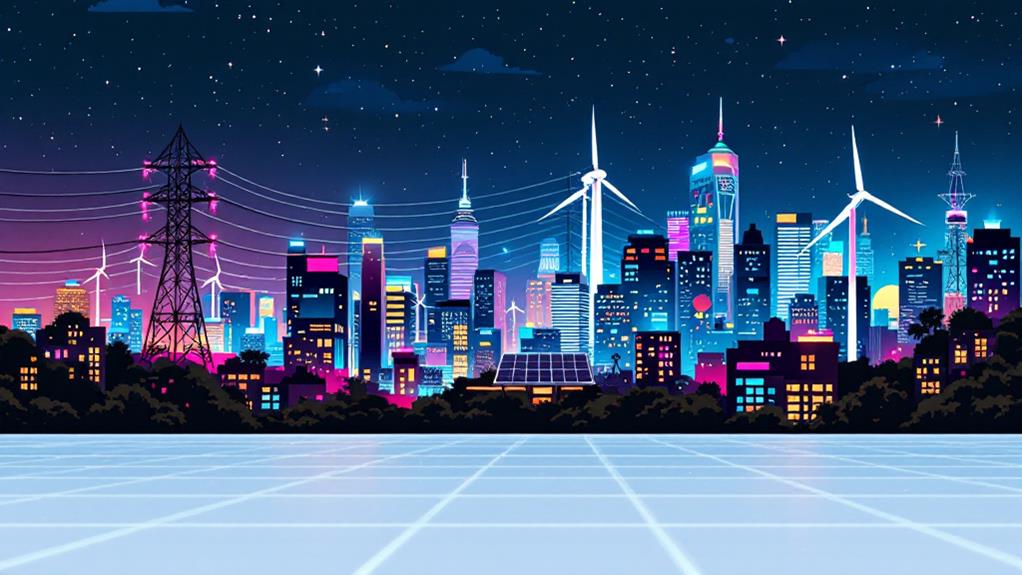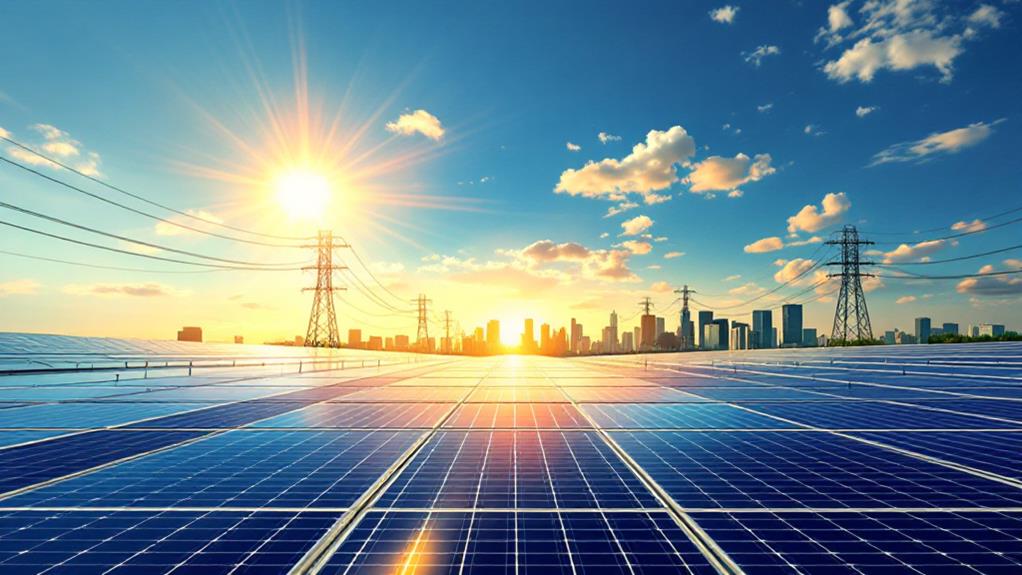Interesting Facts About Electricity: Things You Didn’t Know About Power
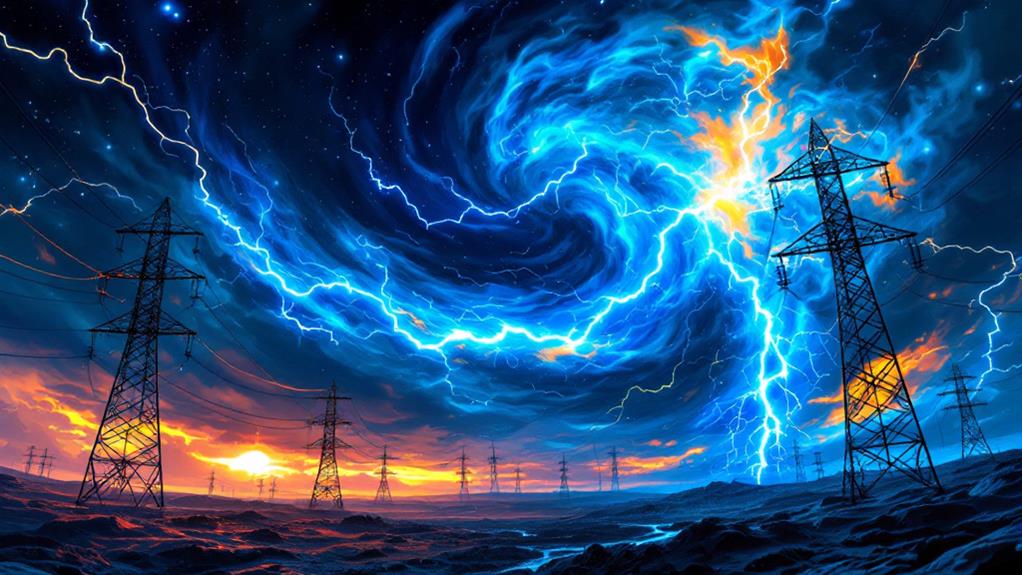
Electricity isn't just about powering your gadgets; it's packed with surprises. Did you know electric eels can emit shocks up to 600 volts, enough to stun an adult human, or that Alessandro Volta's 1800 invention paved the way for the primary battery? The continuous rise in global electricity consumption highlights our growing dependence on power, with innovations in solar, wind, and kinetic energy gathering momentum. Even nature's own electric marvels, like lightning and bioelectricity in animals, play a fascinating role. Explore deeper into the world of electricity, and you'll uncover even more astounding aspects of this crucial energy source.
The Birth of Electricity
Though its roots stretch far back into history, the practical understanding and use of electricity began in the 18th century. During this period, you would've noticed a significant shift in how people perceived and interacted with electricity. It all started with static electricity, a phenomenon that had been observed long before but not fully understood. You might've experienced static electricity yourself when rubbing a balloon on your hair and watching it stick to a wall. This seemingly simple interaction was one of the initial clues into the invisible forces at play.
In the 18th century, scientists began to investigate these forces more systematically. They uncovered that electric fields surrounded charged objects, which explained the attraction and repulsion you observe with static electricity. These electric fields are invisible forces that can exert influence over a distance, a concept that transformed how electricity was perceived.
Pioneers of Electrical Science
Building on the early observations of static electricity, a few brilliant minds emerged in the late 18th and early 19th centuries who would lay the groundwork for modern electrical science. Alessandro Volta's creation of the Voltaic Pile in 1800 marked the birth of the battery, providing a steady current and opening the door to new experiments. Michael Faraday's revelation of electromagnetic induction in 1831 was crucial, enabling the generation of electricity through magnetic fields, and forming the basis for electric motors.
Samuel Morse's invention of the electric telegraph transformed communication in the 1830s, allowing information to travel faster than ever before. Meanwhile, Nikola Tesla's work on alternating current (AC) systems in the late 19th century brought efficient long-distance power transmission, and his Tesla Coil demonstrated high-voltage electricity.
The 20th century saw further advancements, such as the development of quantum electrodynamics, which deepened the understanding of electromagnetic interactions. Albert Einstein's explanation of the photoelectric effect in 1905 paved the way for quantum mechanics, influencing numerous technologies. These pioneers and their groundbreaking revelations continue to shape the world, powering everything from the devices in your pocket to the global electric grid.
Unusual Sources of Power
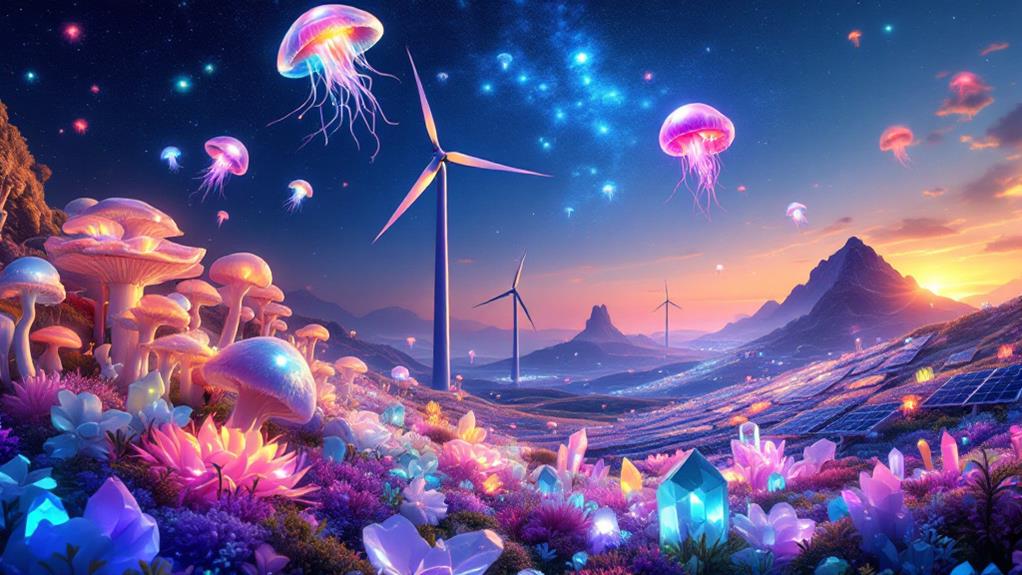
Have you ever wondered where else we can generate electricity beyond traditional means? The world of energy is vast and fascinating, with numerous unconventional sources. Imagine using solar panels not just on rooftops but in space, capturing the sun's power directly. Geothermal energy harnesses the Earth's internal heat, turning volcanic activity and hot springs into a renewable power source. Then there's kinetic energy, which we can capture from everyday movements like walking or cycling.
Piezoelectric materials are another marvel, converting mechanical stress into electricity. Picture a dance floor that generates power as people move on it! Bioenergy sources also surprise us; they transform organic matter like plant and animal waste into electricity. Meanwhile, tidal power uses the ocean's natural ebb and flow to generate clean energy.
Thermoelectric generators turn temperature differences into electrical power, offering potential in waste heat recovery. And don't forget nuclear fusion, the process powering the sun, which scientists are attempting to harness safely for unlimited clean energy. These unusual sources of power challenge our understanding and encourage creative solutions to meet the world's growing energy demands. You're looking at a future where power knows no bounds!
Global Electricity Consumption
Electricity consumption worldwide has skyrocketed over recent decades, driven by technological advancements and population growth. You might not realize just how much our daily lives depend on electricity. From smartphones to electric cars, the demand for power continues to climb. As more countries develop, global energy trends show a significant increase in electricity demand, with emerging economies rapidly catching up to developed nations.
In many parts of the world, access to electricity has improved, transforming lives and enhancing economic activities. However, this surge in demand presents challenges. To meet the rising electricity consumption, countries are investing in infrastructure and exploring different energy sources. Fossil fuels remain a major source, but there's a growing shift toward renewable energy as nations endeavor to reduce carbon emissions and combat climate change.
You can observe these trends in your electricity bill or even the appliances you use daily. Energy-efficient devices and smarter technologies are becoming more common, helping manage electricity consumption more effectively. As these global energy trends continue to evolve, staying informed and making conscious choices about your electricity use can contribute to a more sustainable future.
Innovations in Energy Storage
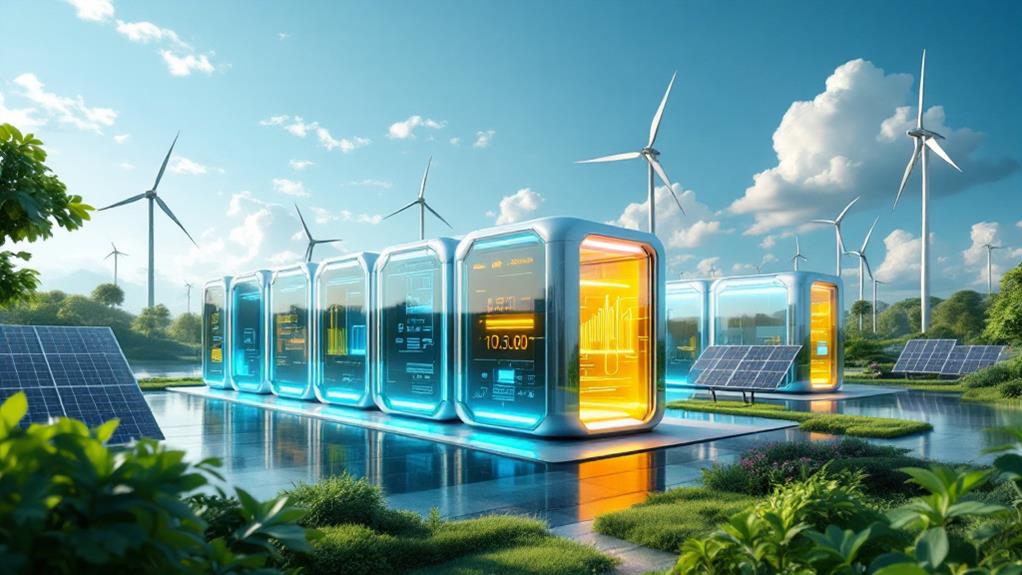
As the demand for electricity continues to rise globally, how we store energy becomes increasingly crucial. You might not realize it, but innovations in battery technology are at the forefront of this energy revolution. Companies and researchers are constantly working to improve energy efficiency, guaranteeing that we can store more power safely and cost-effectively. It's not just about creating bigger batteries; it's about making them smarter and more sustainable.
Consider lithium-ion batteries, which power everything from your smartphone to electric vehicles. These batteries have become more efficient and durable over the years. Advances like solid-state batteries promise even greater energy density, longer life spans, and faster charging times. You'll find these innovations fundamental in reducing our reliance on fossil fuels and supporting renewable energy sources like solar and wind, which require effective storage solutions.
But it's not just about individual devices. On a larger scale, grid storage systems are evolving. Technologies such as flow batteries and pumped hydro storage allow for storing vast amounts of energy, making it available when needed. These advancements guarantee that energy efficiency becomes a reality, helping to stabilize and secure our electricity supply for the future.
The Science of Lightning
Lightning, a breathtaking natural phenomenon, is both awe-inspiring and scientifically fascinating. It all begins with lightning formation, which occurs within storm clouds. As the cloud particles collide, they generate an electric charge. The lighter ice particles become positively charged and rise to the top, while the heavier, negatively charged particles sink to the bottom. This separation creates a powerful electric field. When the potential difference becomes too great, the air can no longer insulate the charges, and a rapid discharge of electricity occurs. That's when you see a bright flash of lightning streak across the sky.
But what about the thunder phenomenon that often follows? When lightning heats the air to around 30,000 Kelvin in a fraction of a second, it causes the air to expand explosively. This expansion creates shock waves that travel through the atmosphere as sound waves, which you hear as thunder. Often, you'll see the lightning before you hear the thunder because light travels faster than sound. By counting the seconds between the flash and the rumble, you can estimate the storm's distance. Next time you witness a storm, remember the incredible science behind these dramatic displays.
Electricity in Nature

Nature is full of electric wonders that go beyond the dramatic displays of lightning. As you investigate the world around you, you'll find electricity woven into diverse natural phenomena. One of the most intriguing examples is the electric eel, a creature capable of generating powerful electrical charges to navigate murky waters, communicate, and even stun prey. These incredible animals can produce shocks up to 600 volts, enough to jolt an adult human.
But electric eels aren't the only sources of natural electricity. Consider these engrossing instances:
- Bioelectricity in Animals: Many creatures, like sharks and rays, have special organs to detect weak electric fields in water, helping them locate prey or navigate.
- Electricity in the Atmosphere: Beyond lightning, the atmosphere constantly generates static electricity through interactions between clouds and air particles.
- Geoelectric Phenomena: The Earth itself has a natural electric field, influenced by factors like magnetic storms and solar winds.
- Electricity in Plants: Some plants can generate small electrical signals to communicate, respond to stimuli, or facilitate nutrient transport.
Each of these natural occurrences showcases the intriguing ways electricity is woven into the fabric of life, far beyond what meets the eye.
Future of Electrical Power
Electricity's natural marvels inspire our quest for sustainable energy solutions. As you look to the future, renewable energy becomes vital in meeting growing demands while minimizing environmental impact. Solar and wind power are leading the charge, transforming how you harness energy from nature. These sources are endless and clean, providing a promising alternative to fossil fuels.
To efficiently manage this shift, smart grids are becoming fundamental. Unlike traditional power grids, smart grids use digital technology to monitor and respond to changes in energy demand and supply dynamically. They help you balance the intermittent nature of renewable energy sources, ensuring a consistent and reliable power supply. Smart grids also empower you to take control of your energy usage, optimizing consumption and reducing waste.
Moreover, the integration of electric vehicles and energy storage solutions are set to revolutionize your daily life. As battery technology advances, you can store excess energy for later use, promoting greater independence from the grid. The future of electrical power promises a more resilient, sustainable, and interconnected world where you play an active role in creating a greener planet. By embracing these innovations, you contribute to shaping a cleaner energy landscape.
